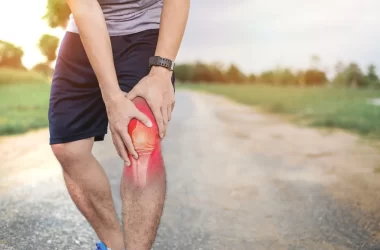As a professional writer, the most pressing danger I face is usually forgetting to hit “save” on my computer. Until recently, the idea of needing body armor never crossed my mind. I thought it was something only law enforcement or the military used. But the tragic school shooting in Uvalde, Texas, made me reconsider. My own child is the same age as those who lost their lives, and that hit me hard.
This led me to start researching protective gear for my child. I was overwhelmed by the options and terminology: What’s the difference between a bulletproof vest and a plate carrier? What about the effectiveness against different weapons like an AR-15? What is “level IV body armor” and the NIJ protection levels? The questions kept piling up, and I found myself confused.
When Premier Body Armor offered me a chance to write for their blog, I decided to address some of these questions in simple terms. Here’s a basic guide to understanding body armor for the everyday person.
Types of Body Armor
Before diving into the specifics, it’s important to know that body armor generally falls into two categories: what you wear and what you carry. I’m not covering military-grade armor here—just the types you might consider for personal safety.
Bulletproof Vests
Bulletproof vests are designed to protect the torso, which is where most vital organs are located. They come in different types based on their intended use. Some vests are made to be worn discreetly under clothing, while others are more suited for high-risk situations like law enforcement.
- Materials: Bulletproof vests are made from various materials that are designed to stop and capture bullets, preventing them from becoming dangerous fragments. While a vest may not prevent all injury, it significantly reduces the chance of severe harm.
- Protection Level: The protection level can vary. Some vests are lightweight and designed to stop lower-caliber rounds, like those from handguns, while others offer more protection.
Plate Carriers
Plate carriers are similar to vests but are designed to hold armor plates. Unlike a standard bulletproof vest, a plate carrier itself isn’t bulletproof. Instead, you insert plates into it for varying levels of protection.
- Flexibility: This type allows for the insertion of different armor plates based on the threat level. Most plate carriers are used in military settings, but they offer customizable protection for various scenarios.
Carrying Armor Options
Since bulletproof vests and plate carriers aren’t practical for school, I looked into alternatives for protecting my child.
Bulletproof Backpacks and Bags
Bulletproof backpacks are designed to protect against bullets in a similar way to vests. They include armor plates that are inserted into the bag.
- Pros and Cons: While they offer protection, high-quality options can be expensive and heavy. This can be a concern for young children.
Bulletproof Inserts
Bulletproof inserts are an alternative to full backpacks. These are slim, lightweight plates that you can insert into any bag, turning it into a protective carrier.
- Advantages: Inserts are generally more affordable than full bulletproof backpacks and are easier for children to manage due to their lighter weight.
Types of Armor Plates
Armor plates are classified into two main types: soft and hard.
Soft Body Armor Plates
- Characteristics: These are flexible and lightweight, commonly used in concealed vests and backpack inserts. They provide protection against lower-caliber bullets, such as those from handguns.
Hard Body Armor Plates
- Characteristics: Hard plates are rigid and offer higher levels of protection. They are designed to stop rifle rounds, but they are heavier and less flexible than soft plates.
Protection Against AR-15 Rifles
One important question is whether body armor can protect against high-caliber rifles like the AR-15.
- Soft Armor: Generally, soft body armor won’t stop rifle rounds, including those from an AR-15.
- Hard Armor: Hard plates are needed for protection against such rifles. Premier Body Armor offers rifle-rated plates that can fit into backpacks and provide protection against AR-15 rounds. These plates weigh around 4 lbs, similar to a textbook, making them a feasible option for school bags.
Understanding NIJ Ratings
The National Institute of Justice (NIJ) provides ratings to indicate the level of protection offered by body armor.
- Level IIIA: The highest rating for soft armor, protecting against most handgun rounds. Commonly used in concealed vests and backpack inserts.
- Level III: A step up to hard armor, offering protection against rifle rounds like 5.56 or 7.62, but not armor-piercing rounds.
- Level IV: The highest level, designed to stop armor-piercing rifle rounds. Typically used by military personnel.
Why Focus on the Torso?
Most body armor is designed to protect the torso because it contains vital organs. While protecting other areas is important, the torso is the primary target in many violent situations.
Conclusion
In the end, I decided on a bulletproof backpack insert for my son. It’s lightweight and easy to manage, fitting into his school bag without adding much extra weight. We’ve talked about how to use it as protection and how it can help him feel safer at school.
I hope this guide helps anyone else feeling overwhelmed by body armor options. There’s a lot to consider, and while I hope we never need to use this gear, having it provides some peace of mind. For more details, continue your own research and check out resources from companies like Premier Body Armor.







